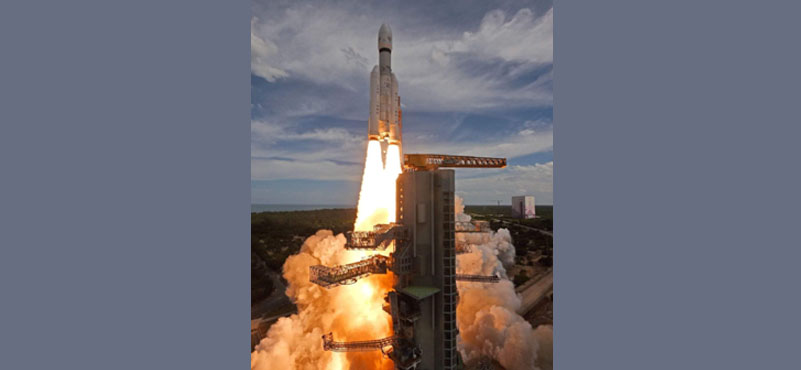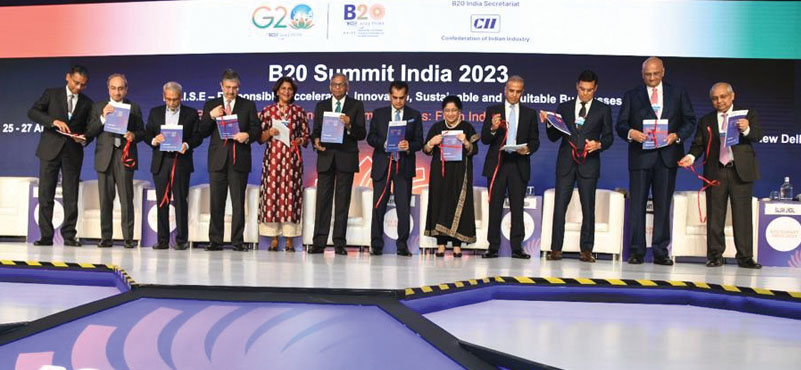A new parliament is a great opportunity to make new rules of business. The time is right, as we seem to be losing our plot for dignified debates and discussions in public domain.
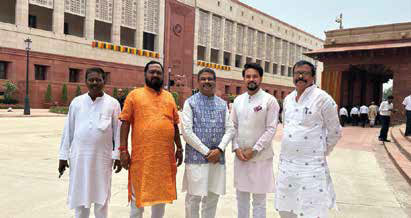 Now, the moot point is, where do we go from here? This much said, most laudable, who can disagree, we are all on the same page. What next, as all this is critical to fulfilling the dreams of every voter, every five years, that the Parliament to which they elect their representatives, will stand by them, deliberate, and deliver. While the government in power, both at the centre and in the states, where different political parties are in power, keep making their contributions, amidst challenges and opportunities, both national and global, our parliament and assemblies have exactly not delivered, marred as they have been by disruptions, unruly behaviour, reduced productivity from reduced sittings. So much so, some of the critical bills have been passed amidst disruptions, simply by show of hands, and not debated at all.
Now, the moot point is, where do we go from here? This much said, most laudable, who can disagree, we are all on the same page. What next, as all this is critical to fulfilling the dreams of every voter, every five years, that the Parliament to which they elect their representatives, will stand by them, deliberate, and deliver. While the government in power, both at the centre and in the states, where different political parties are in power, keep making their contributions, amidst challenges and opportunities, both national and global, our parliament and assemblies have exactly not delivered, marred as they have been by disruptions, unruly behaviour, reduced productivity from reduced sittings. So much so, some of the critical bills have been passed amidst disruptions, simply by show of hands, and not debated at all.
“Confident that the new Parliament will strengthen the spirit of unity and pride in the nation.” – President Droupadi Murmu
“This new Parliament will give new energy and new strength to the world’s largest democracy……A prosperous, strong and developed India, an India that walks more strongly on the path of policy, justice, truth, dignity and duty.” – PM Narendra Modi
“Parliament is the most authentic constitutional forum reflecting the mandate of the people. Its decisive role in law making and shaping the destiny of Bharat is inviolable and it is the basic mantra, nectar and essence of democracy.” – Vice President Jagdeep Dhankar
“When we enter the new Parliament, we should do so with a new resolve. While we take forward the established good traditions, we should also set new benchmarks of parliamentary discipline, decorum and dignity, so that India can act as an ideal in front of democratic platforms located elsewhere globally.” – Om Birla, Speaker Lok Sabha.
“Let us embrace this symbol (sengol) from the past to affirm the values of our present.” – Congress MP Shashi Tharoor.
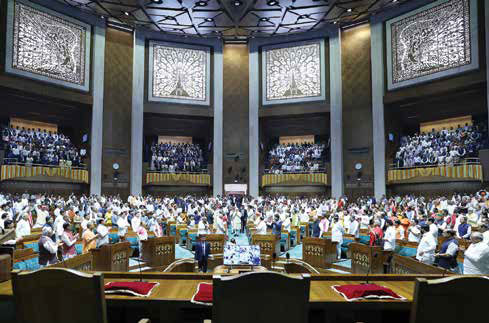 So, all said and done, apart from the politics of the new Parliament building, whether we needed it or not, whether the President should have inaugurated it, whether the Sengol is a befitting symbol, these are at the end of the day, are less important issues. The bigger issue is how we will make the new Parliament a platform for new standards of public discourse, dignity in dialogue and use of language, belief in debate, upholding the true traditions of democracy. Walking the Talk, is the fundamental issue. Or, will we continue to witness boycotts, unruly scenes, protests and disruptions.
So, all said and done, apart from the politics of the new Parliament building, whether we needed it or not, whether the President should have inaugurated it, whether the Sengol is a befitting symbol, these are at the end of the day, are less important issues. The bigger issue is how we will make the new Parliament a platform for new standards of public discourse, dignity in dialogue and use of language, belief in debate, upholding the true traditions of democracy. Walking the Talk, is the fundamental issue. Or, will we continue to witness boycotts, unruly scenes, protests and disruptions.
There must be a cut-off point, which marks a return to healthy politics. Every political party must agree that thus far, but no more! We need new rules that apply uniformly to all parties, must be respected in toto, with no exceptions. We need a ceasefire of sorts, with end of hostilities next. Many of the parties are ruling in one state, while in opposition in the other. They win or lose equally.
What is important is how we proceed on our road ahead? There are some issues that need to be flagged.
Trading between parties once results begin to show up, making switching parties water tight before we have the next Parliament in session, just a year away. Ensuring that no individual can change horses immediately after being elected. Can a member be barred for at least a year from elections. Or, even better for half the tenure of the assembly or parliament. Simply barred, no excuses. No horse trading, no jumping off the bandwagon on which you got elected. And, if you do, you stand automatically to lose your vote and all your entitlements. A simple rule can be that once you fight on one party, you cannot switch to another party during the current term of the assembly!
How do we allow protest in Parliament and in assemblies? The rules of the game must change. There cannot be any disruption beyond a decent and dignified dissent. Nothing beyond. Which means rules that ensure no loss of time in proceedings.
Rushing to the well, use of marshals, all these require new rules. To be applied from a specific date, at both the centre and in the states.
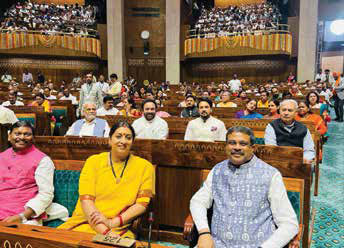 Public language used in discourse, the gaali-galoch! Please, if we have a history and civilisation to cherish, what about the imprint we are leaving behind for our posterity? There should be no infringements, people who say an ugly word must be chastised by their own party, with no exceptions. Would a national level ombudsman help?
Public language used in discourse, the gaali-galoch! Please, if we have a history and civilisation to cherish, what about the imprint we are leaving behind for our posterity? There should be no infringements, people who say an ugly word must be chastised by their own party, with no exceptions. Would a national level ombudsman help?
It is for the more knowledgeable to discuss these. We so often talk of India of young people; surely our leaders need to provide a better example for the youth!
Ideally, those with a close understanding of the constitution can sit together, draft a meaningful next course correction to ensure those who get elected on one party ticket have to stay with that party only. And that no disturbance can take place which wastes time and obstruct proceedings.
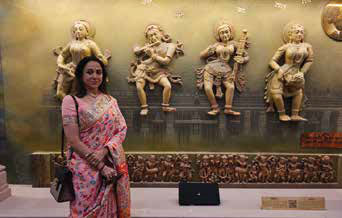 Meanwhile, let us also bring into perspective what this new building has achieved. A state-of-the-art building, executed within 30 months from the day of its foundation day ceremony, a colossus of 64,500 sqm built up, some of it during the covid disruption, with thematic walks and over 5000 artefacts representative of the cultural diversity of our country, built with materials from across India. It is state of the art, with electronic displays for every member, enabling them to choose their language, their guide map through the building. This is no mean achievement. Credit must be given to Urban Development Ministry for their overall guidance and team at work – the architects, the construction team Tata Services. That there was inadequate or no public debate, given the present nature of our national discourse, if we had started a debate on design and selection of material, etc, it is more likely we might have still been in debate mode, with nothing to show. The completed building, from all accounts, has not taken any short cuts, is a perfect structure in design and embellishments. Politics apart, none of this should be overlooked.
Meanwhile, let us also bring into perspective what this new building has achieved. A state-of-the-art building, executed within 30 months from the day of its foundation day ceremony, a colossus of 64,500 sqm built up, some of it during the covid disruption, with thematic walks and over 5000 artefacts representative of the cultural diversity of our country, built with materials from across India. It is state of the art, with electronic displays for every member, enabling them to choose their language, their guide map through the building. This is no mean achievement. Credit must be given to Urban Development Ministry for their overall guidance and team at work – the architects, the construction team Tata Services. That there was inadequate or no public debate, given the present nature of our national discourse, if we had started a debate on design and selection of material, etc, it is more likely we might have still been in debate mode, with nothing to show. The completed building, from all accounts, has not taken any short cuts, is a perfect structure in design and embellishments. Politics apart, none of this should be overlooked.
Consider this: statues at the six entry exit points, do not have numbers as did the earlier parliament house. We have dwars, or gates, in the new Parliament building. These have been inspired by Indian ancient sculptures. While the two elephants made of stone at Gaj Dwar, which the Prime Minister used to enter the building for inauguration, has been inspired by statues at Madhukeshwara temple at Banavasi in Karnataka, going back to 9th century CE, the Ashwa Dwar has got two statues of horses inspired by the sculptures at Sun Temple in Odisha of 13th century. The statues at three other dwars – Shardula, Hamsa and Makara – are inspired by sculptures from Gujri Mahal at Gwalior, Vijay Vithala temple at Hampi and Hoysaleswara temple in Karnataka. The Garuda dwar wears the statues of mount (vahana) of Vishnu, inspired by 18 th century CE Nayaka period Sculpture of Tamil Nadu.



